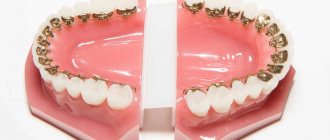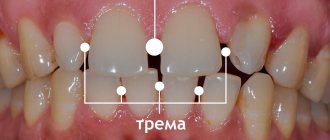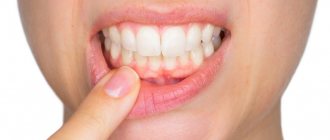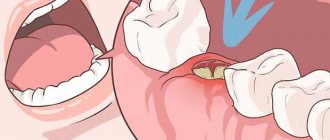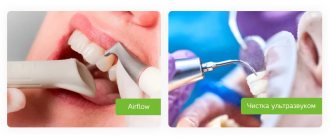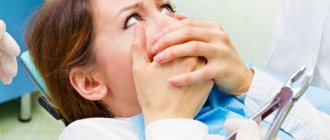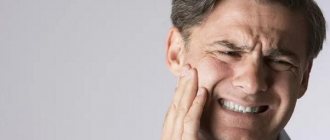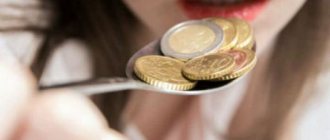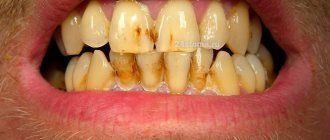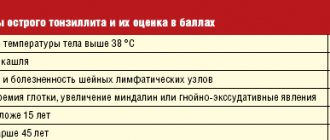- Pediatric orthodontics - correction of malocclusion in children
- Adult orthodontics - bite correction in adults
- Treatment with removable orthodontic appliances
- Correction of malocclusion without braces using mouthguards in adults.
- What orthodontic devices do our orthodontists use to correct the bite?
- How is braces treatment performed?
- What types of braces are there?
- How and why to choose an orthodontist?
- Reminder to the brace bearer
- What is orthognathy?
Everyone who was not given a beautiful smile and correct bite by nature wants to find them and get rid of insecurities, complexes and health problems forever.
But it is generally accepted that orthodontic treatment is long, painful and causes a lot of inconvenience. Today this is a misconception. Modern orthodontic technologies and bracket systems themselves differ significantly from previous ones. With proper preparation for orthodontic treatment and proper behavior of the patient, they provide sufficient comfort for the patient during the process. Read here about what you need for this.
Do teeth with braces hurt a lot and what can you do about it?
Fixing braces is a painless procedure. But after the orthodontic archwire is installed in the braces, pressure will be placed on the teeth. Therefore, for several days after installation and each new arch replacement, the teeth may ache a little.
How much your teeth will hurt depends on the characteristics of your body and its pain threshold. According to statistics, 10% of patients’ teeth do not hurt at all, more than half report minor pain, and only 5% of brace wearers report severe pain.
In any case, the discomfort goes away after a few days, and the orthodontist will advise which painkiller is best to take if the pain greatly ruins your life.
So putting on braces is not painful, but rather a little unpleasant. But for the sake of the beauty of your smile and your own health, you can endure a little.
Aligner failures
Although the aligners are strong, they are still fragile and can also break, but not while being worn. When the aligners are put on the teeth, they fit as tightly as possible and cannot move, so they are not afraid of breakage. But when they are removed, damage is possible:
- When cleaning - if you squeeze them tightly with your hands or wash them with too hot water.
- During storage - if you keep them outside a special container, for example, wrap them in a napkin and put them in your pocket or leave them under the rays of bright sun (they may become deformed from high temperature).
- If you just shoot carelessly, although such cases are rare.
Broken Aligner
If the aligner is broken, the same thing happens as when braces break: the teeth begin to return to their original position, and this process is quite rapid. Therefore, it is recommended to go to the doctor as soon as possible. At the appointment, the doctor will assess the situation and decide: either to make a new aligner of the same shape, or to move on to the next pair. The last option is acceptable if the broken aligners have almost served their purpose.
Summary:
- If the aligners break, you need to go to the doctor as soon as possible so that there is no regression in treatment.
How to get used to the braces system?
Any braces are a foreign body in the oral cavity. And in the first couple of weeks after their installation, the body will be uncomfortable with them. Then addiction will set in, and the braces system will no longer cause inconvenience.
During the habituation period, you may experience:
- increased salivation,
- impaired speech clarity,
- The braces system can rub the mucous membrane.
To reduce these negative effects to a minimum and quickly get used to braces, we recommend:
- Rinse your mouth with astringent solutions - decoctions of oak bark, shepherd's purse, drink tea with viburnum, water with lemon - this will help reduce saliva production.
- Practice pronunciation by speaking tongue twisters or simply reading aloud. This way your speech apparatus will quickly get used to the new working conditions.
- Use orthodontic wax to cover interfering clasps. Your orthodontist will give out the wax immediately after fixation. If the braces are rubbed and inflammation appears on the mucous membrane, use a healing ointment. In this case, Solcoseryl will work well.
- Always have a travel hygiene kit with you so you can brush your teeth immediately after eating.
The principle of operation of braces for correcting malocclusion
- Based on the treatment plan, the orthodontist sets the orthodontic arch to the correct position of the patient’s dentition.
- After being fixed in the grooves of the braces, the metal wire tends to return to the specified reference position and pulls the teeth along with it.
- During the treatment, the power parts are changed and activated, increasing the pressure on the crowns and root system.
- The gradual movement of dental units forms the patient’s correct bite.
During the correction process, Aza&Buka orthodontists adhere to certain rules:
- Thin arc elements are installed first. Treatment begins with a weak impact so that the patient adapts to the orthodontic structure and does not experience severe pain.
- The load is increased gradually, increasing traction and pressure. The arches are changed to stiffer and thicker ones.
What can you eat with braces?
There are no big prohibitions on certain foods during orthodontic treatment, but it is better to adhere to the following rules:
- In the first days after installation and activation, while your teeth ache, it is better to eat soft and liquid food - porridge, puree soups, smoothies, yoghurts and curds. This will make it easier to get used to your new state.
- There is no need to eat sticky foods that can get stuck in the braces and damage them. And even if they don’t damage them, it’s difficult to clean them out later. Therefore, toffees, caramels, chewing gum, as well as cookies, baked goods, and other foods that become sticky when chewed are prohibited.
- Do not eat hard foods - crackers, nuts, pieces of meat, etc. — they can easily damage your braces. For the same reason, cut raw vegetables and fruits into small pieces.
- Don't forget that products such as tea, coffee, colored drinks, beets, blueberries, etc. may change the color of some types of braces and ligatures on them. And sitting in a cafe with a brace system full of, for example, red beets is not very aesthetically pleasing. So think about it.
- If your brace system has thermo-active orthodontic wires, then you cannot eat ice cream or drink ice water. The fact is that at ordinary temperatures a thermoactive arc can be given any shape. Then, under the influence of a person’s body temperature, it “remembers” the shape that was put into it during production and begins to work. And here you are with your ice cream...
Construction of braces: comparison of non-ligating and self-ligating structures
There are ligature and self-ligating devices. The first includes traditional designs: the arc is fixed in the groove using elastic or wire ligatures. Example: Mini Diamond, Inspire Ice, Orthos devices. Ligature systems are characterized by a long treatment period - from one to three years, depending on the complexity of the clinical case, lengthy adaptation and labor-intensive hygienic care. Activate the device: replace arches and ligatures, it is necessary on average once a month, and sometimes more often.
traditional construction with ligatures
ligature Mini Diamond
The design of self-ligating braces has a fundamental difference: the system works without ligatures. Consists of a groove and a closing lid. The orthodontic arch slides in the groove. Ligature-free designs provide a reduction in treatment time compared to ligature devices by an average of 7 months. Less painful during the adaptation stage and easier from the point of view of oral hygiene. They turn out to be the option of choice in many clinical cases. The entire line of Damon System braces are self-ligating.
self-ligating Damon Q2
How does a braces system without ligatures work? The principle of operation of non-ligation devices is divided into passive and active self-ligation. With the passive type of fixation, the arc moves freely in the groove. The cover holds the arc and does not put pressure on it. Example: Damon Q, Damon Clear. With the active type of self-ligation, the clip presses on the arch and moves it to the base of the groove. Activation of self-ligating systems is carried out once every 2-3 months.
system without ligatures
Damon Clear and Q on typodont
Braces are made from various materials. Ligature and self-ligating structures are made of metal, transparent polycrystalline aluminum (ceramics), plastic and artificially grown sapphire. Metal braces, for example, Damon Q and Damon 3 MX, are the most durable. The Damon Clear2 ceramic and sapphire Inspire Ice models have the best aesthetic characteristics.
metal Damon Q2
ceramic Damon Clear
The orthodontist and the patient jointly overcome the path to high aesthetic smiles and a healthy dental system. Regardless of the type of braces and manufacturing material, the combination of the orthodontist’s professionalism with a high degree of patient responsibility allows one to achieve stable results in the treatment of malocclusions.
How to properly brush teeth with braces?
To care for your teeth while wearing braces, you will need a whole range of products:
- A suitable toothpaste should be recommended by your dentist.
- Special orthodontic toothbrush.
- Mono-tuft toothbrush.
- Interdental brushes of different diameters.
- A special dental floss for caring for braces is superfloss.
- Mouthwash.
- And, preferably, an irrigator.
You need to brush your teeth thoroughly twice a day - morning and evening, consistently using all the products from the list above. With toothbrushes you need to make sweeping movements, first on the lateral sections of the dentition - from the outside and from the inside, and then in the front. Using dental brushes and floss, it is necessary to thoroughly clean the interdental spaces, areas under the arch and next to the braces. At the end of hygiene, you need to rinse your mouth with mouthwash or use an irrigator.
During orthodontic treatment, patients need to carry a special travel dental hygiene kit with them in order to always be able to get their teeth in order with braces. After each meal, remove all food debris from the braces system.
In addition to daily home hygiene, once every 4-6 months, patients with braces need to undergo a professional hygiene procedure in the clinic.
Immediately after fixing the braces system, the orthodontist will teach the patient how to properly care for their teeth during treatment.
Remember, it is not braces that spoil your teeth! It is poorly cleaned plaque that causes demineralization and then caries.
Problems and inconveniences during dental treatment
After installing the braces system and starting treatment, the patient may experience various inconveniences. We have prepared special material on the most common problems and ways to solve them.
Content:
- 1. Cheek scratching
- 2. Arc problems
- 3. If your teeth hurt
- 4. Food restrictions
- 5. If the bracket falls off
- 6. If the diction has changed
- 7. Problems with intermaxillary elastics
If something rubs or scratches your cheek
Take a mirror and look at your teeth in bright light. Try to find out which part of the system scratches the mucous membrane of the tongue or cheek. During the first 2-3 weeks, the uneven edges of the braces may scratch or rub the mucous membranes of the cheek, lips or tongue. If this causes serious inconvenience to you, take the protective wax that we gave you on the day your braces were installed. But remember that without wax you will quickly get used to orthodontic equipment.
Take a small piece out of the wax box, roll a small ball in your hands and knead it on the protruding hook of the bracket. The bracket itself or the tip of the arch, first blot saliva with a paper napkin. After some time, the wax may fall off, then repeat this procedure again.
Metal ligatures (white metal ligatures). The tails remaining from metal ligatures are bent towards the tooth and usually do not interfere at all. If, within a month of actively brushing your teeth with a brush, the tail of the ligature becomes bent and scratches the oral mucosa, then the patient, independently, but very carefully, can bend the tail of the ligature under the arch with half a wooden toothpick.
Arc problems
The arch is not fixed rigidly in the locks on the last teeth. It fits freely into the locks and can move back and forth without restrictions.
1. If, while eating, the initial super-elastic arch has popped out of the last lock and is in the way, you can insert it back yourself. To do this you need a mirror, good lighting and tweezers (nail clippers). With one hand, pull back the cheek, and with the other, take the tip of the arch with tweezers, very carefully, without bending the arch 90 degrees, insert it into the lock (the lock is a tube into which the arch is inserted).
2. The tip of the arc digs into the gum or cheek. As the teeth are aligned, the arch takes on a more even shape, and the end of the arch may come out of the last locks, injuring the mucous membrane of the cheeks or gums. In this case, if this causes serious discomfort (“I can neither eat nor speak”), you can come up without an appointment and the doctor or his assistants will cut off the problematic tip of the arch (if the tip has protruded by more than 3 mm).
If your teeth hurt
a) After installing braces, in the first 3-4 days you will experience pain only when biting or chewing food. It happens that teeth hurt for up to 10 days (very rarely). Sometimes there may be no pain at all, this is also normal.
b) After activation (control visit), during which the arch was replaced, the tooth/teeth may ache for 1-2 days, but also only while eating. Rarely do any patients resort to using painkillers these days, but if you feel the need for this, take those painkillers (ketanov, Nurofen, Nise, etc.) that you have on hand.
c) During the procedure for removing braces, the patient experiences slight discomfort (but it lasts 1-2 minutes) AND THAT'S ALL!!! THERE WILL BE NO OTHER PAIN SENSATIONS!!!
Food restrictions
To avoid damage to the equipment, you may need to avoid certain products. It is impossible to list all the foods that cannot be eaten, but each patient must determine for himself the force with which he can bite into his favorite food without damaging the braces.
We recommend not to eat: nuts (in any form), crackers, dried fruits, hard confectionery, caramel, toffees, sweets (especially grilled), hard toast, unhulled seeds, popcorn, chips. Raw carrots, radishes, turnips, hard fruits (apples, pears can be cut into slices), fruits containing seeds (peaches, plums, apricots, cherries, it is better to break them, cut them or separate the stone).
In the first months of treatment (in the initial arcs), you should not combine cold and hot foods together (ice cream and coffee, cold yogurt and a hot drink, etc.). Sudden temperature changes can disrupt the properties of the arc (the most important element in the bracket system).
If a brace falls off
Why do braces fall off, reasons?
- 1. When chewing or biting off hard food.
- 2. If you try to pick out something stuck under the archwire or between the braces on your own.
- 3. If the teeth have changed their position and there is contact of any tooth with the brace of the opposite jaw. If you do not notice this and do not tell the doctor about it, then, most likely, the braces will fall off as soon as you eat or when you force your teeth together.
Often in such cases, the patient does not immediately detect this problem. And to his surprise, while brushing his teeth or the next day, he identifies a lock that has fallen off, for a reason unknown to him.
What to do?
If you have external braces:
- — try to quickly make an appointment for an unscheduled appointment;
- - if you wear intermaxillary elastics, then stop wearing the elastics until the bracket is glued.
If you have internal braces:
- — try to quickly make an appointment for an unscheduled appointment;
- - if you wear intermaxillary elastics, then stop wearing the elastics until the bracket is glued;
- - do everything so that the bracket does not get lost;
- - if this is a bracket on the last tooth, and the arch is not bent behind the bracket, then try to very carefully remove it from the arch and save it. If the bracket does not come off, do not apply any force; you may damage the adjacent bracket. Leave it in place, it won't get lost.
If the diction has changed
Diction may change slightly only with lingual (internal) braces. With the new miniature lingual braces INCOGNITO, there is virtually no impairment of diction. But if you still encounter a similar problem, short-term exercises with ditties and tongue twisters will help restore your eloquence:
There is firewood in the yard, the gang is on the firewood, the gang has grass, all the gang are used for firewood. Karl stole dollars from Clara, and Clara stole the quarterly report from Karl. The workers privatized the enterprise, privatized it, but did not privatize it. The beggar rustles in thousands and fifty thousandths. The highest echelons marched towards their sponsored people along the highway, drunk. Regulators regularly adjusted the regulators. It is not clear whether the shares are liquid or not. Taxable grace. The guru's inauguration went off with a bang. The exhibitionist has small biceps. The moron got into the habit of doing bodybuilding. Sasha herself is perfection, and she’s also improving herself! Unpromising. In Kabardino-Balkaria, valocardine is from Bulgaria. De-ideologized, de-ideologized, and pre-ideologized. He who does not work does not eat what he who works eats. Turner Rappoport sawed through the pass, rasp and support. Coconut cookers boil coconut juice in coconut cookers. The eyes of a gazelle were staring at her from behind the spruce tree. Underqualified. Sasha walked along the highway and sucked on a dryer. Senya is carrying hay in the canopy, Senya will sleep in the hay. The cap is not sewn in the Kolpakov style, the bell is not poured in the Kolokolov style, the cap needs to be re-packed, re-capped, re-forged, re-capped. The heron wasted away, the heron was withered, the heron was dead. From under Podvypodvert.
After 3-4 days of training, your diction will become even better than before installing braces.
Problems with intermaxillary elastics
1. Take your time to remove the elastic on the first day of your appointment. Before removing the rubber bands the doctor put on, study which tooth they were put on, so as not to confuse them in the future, because... it makes a big difference. And neither the administrator nor the doctor will help you over the phone.
2. Sometimes elastics break within 24 hours. Because one elastic should be changed 1 or 2 times a day (as prescribed by the doctor), we recommend carrying a bag or small box with a small number of replacement elastic bands.
3. You need to remember and know what animal is drawn on your bag, because... Sometimes the rubber bands in the bags run out, and the patient or his parents can drive up to the clinic, name the animal on their bag to the administrator and receive a new bag of rubber bands. Or tell your doctor about it at your scheduled visit.
It is important not to take breaks in wearing, because... The result achieved in months, you can lose in a week of not wearing elastics. Only a doctor can cancel elastics. Just because your bag is out of rubber bands doesn't mean you don't need to wear them anymore.
4. If the hook falls off, the arc jumps out of the lock, the lock on which the elastic was put on, or any other lock breaks while wearing elastics, then in this case you need to stop wearing elastics and report the problem to the clinic.
During treatment there will be some tooth mobility, this is normal. Don't panic, your tooth won't fall out and won't go anywhere. Many people don't notice this at all.
The tooth is fixed in the bone tissue by connective tissue ligaments. When straightening teeth, at the beginning of treatment, these ligaments are stretched, and the tooth acquires slight mobility, but when the tooth is installed in its final position, in the second half of treatment, these ligaments are shortened, the tooth is strengthened in the bone tissue and its mobility decreases. Temporary gaps (cracks) may appear between the teeth in the first half of treatment, but by the end of treatment all gaps will be closed.
Posted by:
Glyakova Anna Andreevna
Orthodontist
Last update: 20/29/2020
How to wear orthodontic traction bands - elastics?
Orthodontic rods - elastics - are special latex “rubber bands” that are placed on the hooks of the braces system to tighten the jaws together. They greatly increase the effectiveness of braces treatment. Properly selected and worn elastics do not interfere with speaking. The main rule of wearing pull-ups is regularity.
The time to start wearing elastics, their type and the pattern according to which the rods are put on the brace system is prescribed ONLY by the orthodontist. Wearing elastics on your own can only cause harm. Also, the orthodontist puts orthodontic rods on the patient’s brace system for the first time and teaches him to do it independently. In order not to forget the location of the rods, it is convenient to photograph the diagram and then carefully repeat it - it is not at all difficult.
Types of arches for braces
The diameter and cross-sectional shape of the orthodontic arch are selected for each stage of treatment. The thinner the wire, the more gentle the effect. Correction of the bite begins with the installation of thin movable arches. Both parameters are taken into account simultaneously:
- Round cross-section with a diameter of 0.14-0.18 inches. Wires with low rigidity, increased elasticity and good mobility. Suitable for starting treatment - painless adaptation and getting used to the metal brace system.
- Arcs with a rectangular cross-section of 0.14-0.25 inches. Installed during the main period of correction - they provide an intense impact, are responsible for changing the shape of the dentition and moving individual units.
- Square cut arc with dimensions of 0.16-0.175 inches. The wire has maximum resistance - it does an excellent job of final alignment of the bite and creating correct occlusal contacts.
Orthodontic arches for braces are divided into:
- By purpose - for upper and lower teeth (Ulilier / Lower), for vestibular and lingual braces, universal.
- By size, taking into account the size of the teeth - large, medium, small.
What to do if the bracket comes off or the arch in the bracket system breaks?
Every brace wearer has at least once encountered the breakdown of elements of the brace system. You need to take this calmly, but you should return everything to its place as quickly as possible. A broken brace system not only does not correct your bite, it can cause serious harm.
So, in case of any force majeure with your braces system, call your orthodontist and make an appointment for the next few days.
What you can do yourself in various cases of brace system failure:
1. If the bracket comes off.
If the lock has only come off a little and has not completely fallen off the tooth, cover it together with the arch with a piece of orthodontic wax.
If the bracket has come off completely and is “hanging” on the arch, try using tweezers to remove the ligature or open the bracket cover to remove the lock from the orthodontic arch. Don’t forget to bring it to the orthodontist later - perhaps he will not change the lock, but will glue the old one in its place.
2. The orthodontic arch has jumped out of the bracket slot.
You can try to bring it back yourself using eyebrow tweezers. It is convenient to close the cover of a self-ligating bracket with a pencil with an elastic band at the end. If it doesn’t work out, it’s okay, but don’t put off visiting the orthodontist, because... in this situation, one tooth “fell out” of the treatment program, and this is bad.
3. When the orthodontic arch leaves the groove of the last bracket, it can injure the buccal mucosa. Try to carefully insert it back. If this does not work, then trim the free piece with nail clippers. Be careful not to swallow what you cut off! Cover the sharp end of the archwire with orthodontic wax or a cotton ball. This way you won't get hurt while getting to the orthodontist.
What is the danger of mechanical damage to the system?
A loose bracket or a spring that has changed its tension can radically change the planned trajectory of teeth movement. If you promptly contact the orthodontist center, the attending physician will, of course, restore the deformed system. But you will have to pay for his additional work and time spent, as well as for a new brace or other lost structural element. Remember this both when performing mandatory hygiene procedures and during meals, when you want to eat something tasty, but, unfortunately, forbidden for now.
